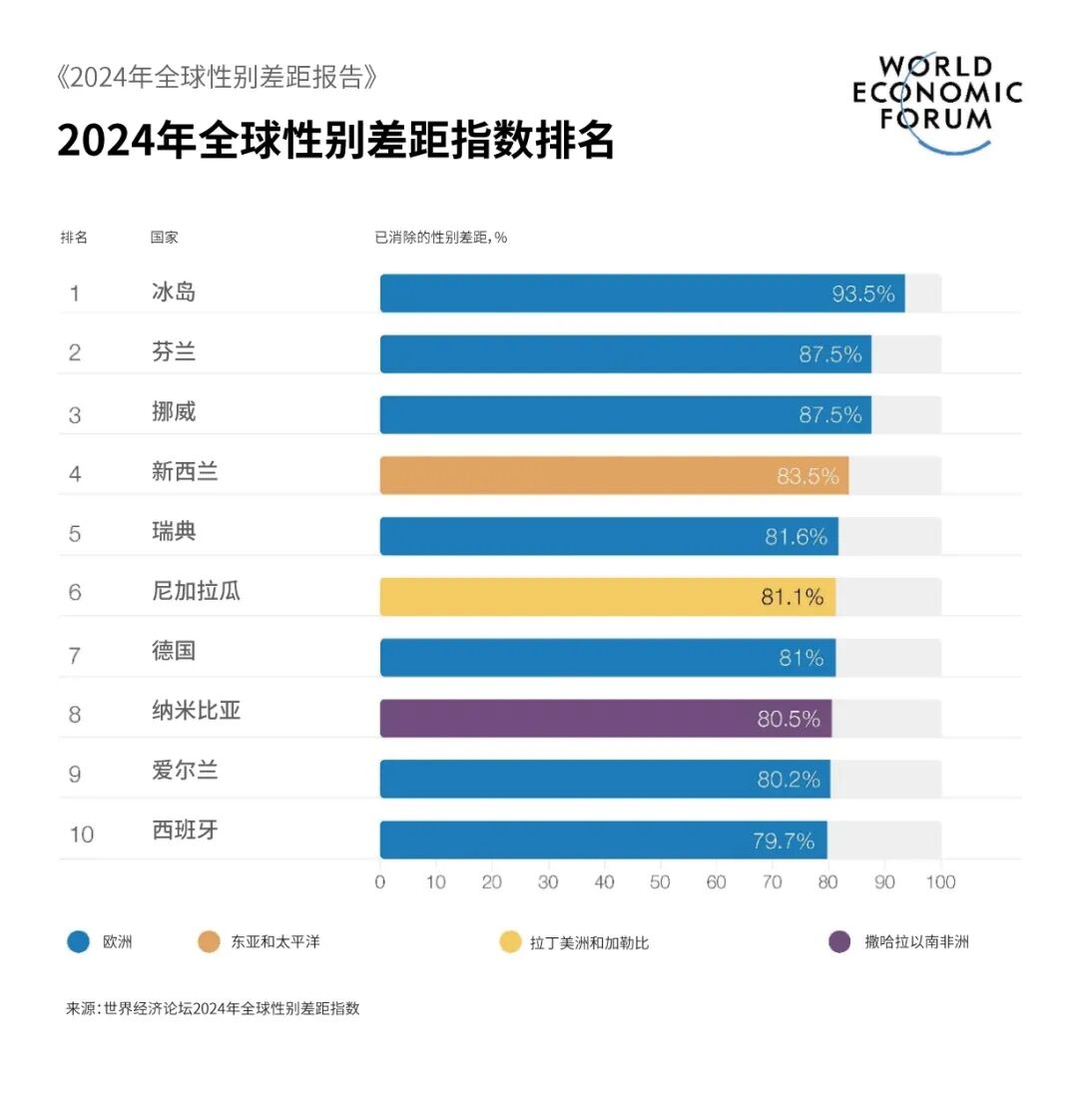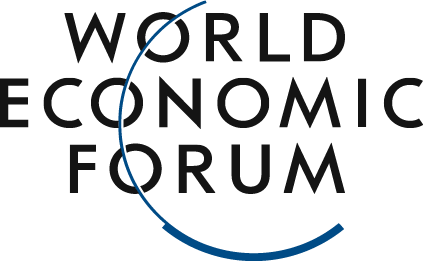Home/News/Gender equality will still require five generations of effort, but the historic election year holds new hope./
Gender equality will still require five generations of effort, but the historic election year holds new hope.
2024-06-12
The global gender gap has narrowed only slightly, and at the current rate of progress, it will still take five generations to achieve full parity.
The gender gap is most pronounced in the area of political participation, with high-level political positions remaining largely out of reach for women across countries. As a result, progress in this area has the potential to make the greatest impact.
In 2024, more than 60 countries will hold general elections, resulting in a record-high number of global voters. As a result, female political representation is expected to rise, leading to an overall improvement in gender equality.
Global gender equality in labor force participation has rebounded from 62.3% during the pandemic to 65.7%.
The proportion of women in the field of artificial intelligence engineering has doubled since 2016, yet women remain significantly underrepresented in STEM fields—and in AI itself.
To read the full report, infographic, and more, click "Read the Original Article."
The World Economic Forum’s Global Gender Gap Report 2024, released today, reveals that the global gender gap has narrowed by 68.5%. However, at the current pace of progress, it will still take an estimated 134 years—roughly five generations—to achieve full gender equality. Compared to last year, the global gender gap has narrowed by just 0.1 percentage point.
“While there have been notable achievements, this year’s Global Gender Gap Report underscores that steady, incremental progress highlights the urgent need to recommit globally and work together toward gender equality—especially in the economic and political spheres,” said Saadia Zahidi, Managing Director of the World Economic Forum. “We can’t afford to wait until 2158 to close the gender gap; instead, we must act decisively—and now.”The gender gap in leadership positions: Globally, high-level political and industry roles remain largely out of reach for women.
The proportion of women in federal and local government positions has increased, yet senior-level roles remain largely out of reach for women worldwide. In 2024, more than 60 countries around the globe will hold general elections, attracting a record-breaking number of voters. Against this backdrop, the representation of women in politics is expected to rise. However, LinkedIn data reveals that female executives at the highest levels remain strikingly rare across industries—regardless of sector, women are consistently underrepresented, with their numbers "dropping steadily" from entry-level roles all the way up to top executive positions.Among the economies covered by the Global Gender Gap Index, half have steadily made progress—yet the gender gap remains significant. In 2024, the global gender gap narrowed slightly, thanks to improvements in the "Economic Participation and Opportunity" indicator (which rose by 0.6 percentage points). However, at the same time, progress in "Political Empowerment" and "Health and Survival" remained sluggish, while the "Educational Attainment" indicator even saw a modest decline.

Regions and countries showing significant progress
Although the challenges remain deeply entrenched, the report still highlights several notable and positive trends. Globally, gender equality in labor-force participation has rebounded from its post-pandemic low of 62.3% to 65.7%. Latin America and the Caribbean region achieved an impressive overall gender-equality score of 74.2%. Driven by strong progress in labor-force participation and equal representation in professional roles, the region’s economic equality score reached a record high of 65.7%, while its political empowerment score also climbed to the second-highest level on record (34%). Latin America’s success stories can serve as a powerful example for other regions to follow.Many economies have made significant progress, with six countries improving their rankings by more than 20 places each. These include Ecuador (jumping 34 spots to No. 16), Sierra Leone (rising 32 places to No. 80), Guatemala (gaining 24 spots to No. 93), Cyprus (climbing 22 places to No. 84), as well as Romania and Greece—both moving up 20 spots to No. 68 and No. 73, respectively.
National and Regional Highlights
EuropeContinuing to lead the rankings, Iceland has achieved a gender equality score of 75%. Among the top 10 countries, 7 are from Europe. Iceland remains the most gender-equal nation in the world, having already closed 93.5% of its gender gap overall. Other top-ranking countries include Finland, Norway, Sweden, Germany, and Ireland, all of which have eliminated more than 80% of their gender disparities. Since 2006, Europe’s overall score on gender equality has improved by 6.2 percentage points.North AmericaRanking second among all regions, the overall gender equality score stands at 74.8%, marking a 4.3-percentage-point increase since 2006. The region demonstrates strong performance in two key areas: education and health, achieving scores of 100% and 96.9%, respectively. Meanwhile, its economic participation score remains robust at 76.3%. However, this figure has edged slightly downward due to persistent disparities in labor income and an insufficient proportion of women in leadership roles.Latin America and the CaribbeanRegionRanking third, the region achieved a gender equality score of 74.2%. Since 2006, the area has made significant progress, with its overall score improving by 8.3 percentage points—making it the region showing the most remarkable advancement. North America has also seen encouraging gains in labor force participation, with women occupying a notably high proportion of professional and technical roles, contributing to the region’s impressive overall score of 68%.East Asia and the PacificRegionThe region scored 69.2% on gender equality, ranking fourth among all regions. While its score for economic participation and opportunity improved to 71.7%, significant disparities remain across countries within the region, particularly in labor force participation and gender ratios. The region continues to perform strongly in education and health, but lags behind in political empowerment. Notably, top-performing countries include New Zealand (ranked 4th) and the Philippines (ranked 25th), among others.Central AsiaRanked fifth with a score of 69.1%. The region has nearly achieved gender equality in indicators such as education and health, but its scores in economic and political areas have declined compared to 2023. Armenia, Georgia, and Kazakhstan are the top-performing countries in the region, each closing more than 71% of their gender gaps.Sub-Saharan AfricaRanked sixth with a score of 68.4%. The region has made significant strides in political empowerment, with countries like Namibia and South Africa leading the way. However, challenges remain in areas such as economic participation and educational attainment. While more than half of the countries have closed over 70% of their gender gaps, the gap between the highest- and lowest-ranked nations still stands at an impressive 22.9 percentage points.South AsiaRegionScoring 63.7%, it ranks seventh. Since 2006, the region has made significant progress in education attainment indicators, but has struggled to advance in areas like economic participation and certain political empowerment metrics—such as the gender ratio among ministerial-level officials and parliamentarians. Bangladesh has performed best in the region, followed closely by Nepal and Sri Lanka.Middle East and North AfricaScoring 61.7%, the region ranks eighth. Although it continues to score low in economic participation and political empowerment, the area has made significant progress in educational attainment since 2006. On average, the region still lags behind on labor force participation indicators, yet countries like Saudi Arabia, Bahrain, and the UAE have achieved remarkable strides toward gender equality in recent years. Among them, the UAE and Israel rank highest in the region, being the only two economies in the top 100.
The gender gap in the economy: While the gender disparity in STEM fields and AI talent is narrowing, progress still needs to accelerate.
While female labor force participation improved in 2024, significant disparities remain across regions. LinkedIn data reveals that in nearly every industry and economy, women still make up a smaller share of the workforce compared to men. Globally, women account for 42% of the labor force and hold 31.7% of leadership positions. Additionally, other factors—such as gender gaps in professional networks and the division of household responsibilities—continue to hinder women’s progress in the economic sphere. According to the World Bank, closing gender gaps in employment and entrepreneurship could boost global GDP by more than 20%.A positive trend is that, since 2016, the concentration of female talent in the field of artificial intelligence engineering has more than doubled, highlighting some notable progress in this area. However, the gender gap in STEM fields and AI-related talent remains a significant challenge. LinkedIn data reveals that women make up 29% of entry-level STEM positions, but only 12.2% of executive roles. Meanwhile, according to Coursera’s data, online training programs in areas like AI and big data, as well as courses in programming, networking, and cybersecurity, still show remarkably low gender equality scores—30%, 31%, and 31%, respectively—making it difficult to close the existing gender disparities in the workforce. Additionally, a large-scale employee survey conducted by PwC found that there is a gender gap in perceptions about the skills most in demand for current job roles: women generally anticipate that, over the next five years, digital, analytical, and "green" skills will become less critical to their career paths. Furthermore, differences persist in how men and women view opportunities to acquire these future-oriented skills."Women have historically made slow progress in advancing into leadership roles. Today, the percentage of women in leadership positions is beginning to decline from its peak in 2022. The global economic slowdown has disproportionately impacted women, highlighting the systemic barriers that continue to hinder their entry into the workforce," noted Sue Duke, Vice President of Global Public Policy and Economic Insights at LinkedIn. "We’re entering a critical moment as generative AI is poised to reshape the professional skills employers value most—potentially reshaping the entire job market. Employers must ensure that gender perspectives are integrated into skills-upgrade training programs, paving the way for a fairer, more equitable workplace environment tailored for the future.""Our research reveals that while the total number of people enrolling in our courses has increased, the gender gap in AI and digital skills has actually widened," said Jeff Maggioncalda, CEO of Coursera. "Targeted interventions are essential to help close this gap and ensure that everyone has equitable access to opportunities for learning new technologies. Generative AI will play a pivotal role in this process, enabling the creation of personalized, multilingual learning experiences that cater to the diverse needs of learners worldwide."Governments and businesses must shift their resource allocation and mindset, recognizing gender equality as a critical prerequisite for sustainable growth. Only through collaboration and targeted interventions can we build a world where gender equality is truly achieved. To this end, the forum is actively mobilizing all stakeholders to get involved."Global Gender Equality Sprint Plan 2030"(Global Gender Parity Sprint to 2030) invites public and private sector partners to join in redefining the path toward gender equality.
About the "2024 Global Gender Gap Report"
This year marks the 18th time the World Economic Forum has released its Global Gender Gap Report. The report provides a benchmark analysis of gender disparities across key areas such as economic participation, educational attainment, health and survival, and political empowerment. As the longest-running index tracking gender equality since 2006, it continuously monitors and evaluates countries' progress in closing these critical gender gaps.On the "Global Gender Equality Sprint Plan for 2030"
The "2030 Global Gender Equality Acceleration Initiative" aims to unite the power of businesses, governments, and international organizations to speed up the achievement of gender equality in economic participation and leadership roles by 2030. By championing gender equity and delivering impactful interventions, this action-driven initiative is committed to setting a new benchmark for global economic growth and innovation. To learn more about the "2030 Global Gender Equality Acceleration Initiative," please visithttps://www.globalgenderparitysprint.org/homeThe World Economic Forum is an independent and neutral platform dedicated to bringing together diverse perspectives to discuss critical global, regional, and industry-specific issues.
Follow us on Weibo, WeChat Video Accounts, Douyin, and Xiaohongshu!
"World Economic Forum"




